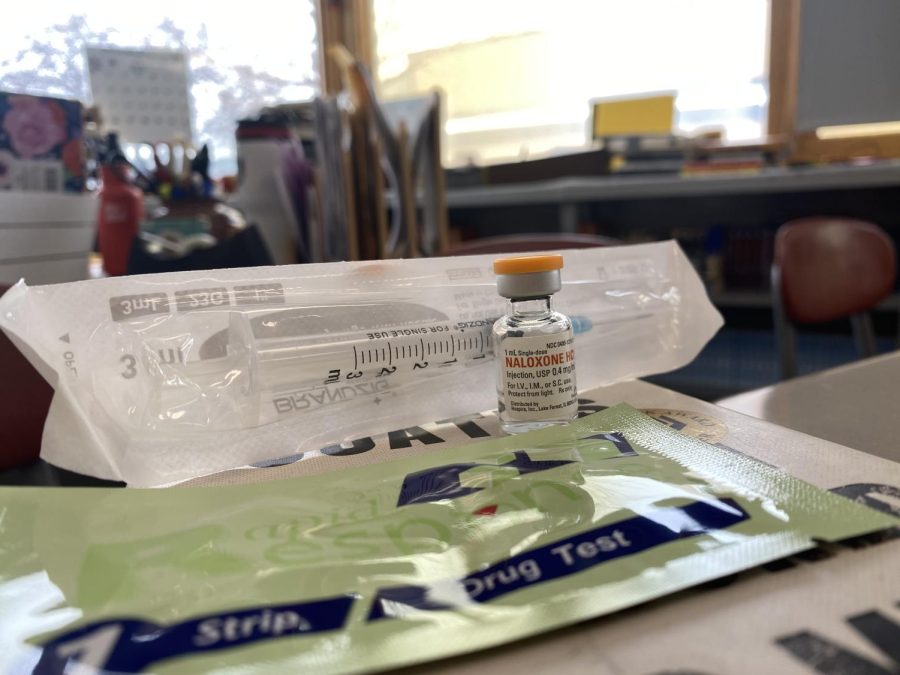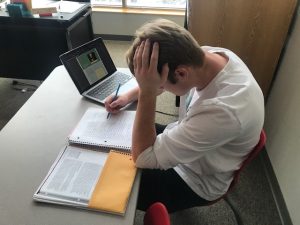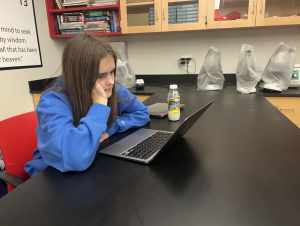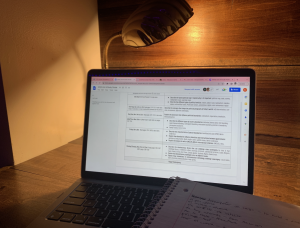Overdose Education: Important Lessons for a Changing World
Pictured are a fentanyl test strip, a vial of naloxone, and a syringe, which are all measures that can be taken to prevent a drug overdose.
February 3, 2023
Drugs have been an issue for schools for decades, but their use in recent times has only gone up. Since highly dangerous fentanyl is now in the mix, it’s time for schools to consider different methods to prevent student deaths and addiction.
Current methods of drug prevention are clearly ineffective. Nearly 44% of students have tried marijuana and another five percent have tried cocaine, says the National Center For Drug Abuse Statistics (NCDAS). Both of these drugs are commonly laced with fentanyl, and as this issue continues to grow, more children will be at risk of an unintentional overdose. In addition, the amount of fentanyl in opioids continues to increase, leaving people that use these drugs more at risk.
Unfortunately for those using any type of drug in a pill form, the risk is incredibly high. The Drug Enforcement Department found that 42% of illicit pills contained a potentially lethal dose of fentanyl. However, this risk depends on the user’s tolerance, past usage, and body size. These factors are more pronounced in younger people who are trying a drug for the first time, leading to a higher chance of overdosing.
Many school officials still hold the belief that the best way to prevent drug overdoses is to adopt a strict no-drug policy, going as far as to randomly test students for illicit substances. A 2014 study from the National Library of Medicine found that random testing in high schools moderately lowered marijuana usage in schools. However, an increase in other illicit drugs besides marijuana was observed, further showing that a hardline approach to drugs should be reconsidered. “Best case scenario, don’t use it… That’s how you mitigate an overdose. [But] I was told, that’s not realistic,” Chemical Health Counselor, Laura Esping said.
Unfortunately, it is often unrealistic to expect people to simply not use drugs. Other methods of mitigation must be considered. Fentanyl test strips are an excellent way to prevent an overdose. You can obtain your own fentanyl test strips online or at Naloxone access points. But is this really the best way to protect yourself or prevent an overdose?
Esping recommends never using alone and always having someone with you to help in case something happens. Using alone can add to a depressive feeling, which is a reason one uses drugs in the first place. “Just never do it alone. Have someone always watching and have somebody watch out for you,” Esping said.
Whether you use drugs often, periodically, or never, the threat of an overdose is ever present in our communities. Despite the growing trend of overdoses, few know how an overdose can be stopped. It can be done rather simply with the use of Naloxone (also referred to as Narcan). Naloxone is a drug that can prevent someone from dying from an opioid or fentanyl overdose. You must take a course before being able to obtain Naloxone. These courses are usually offered at Naloxone access points (locations that provide access to drug-related courses, testing kits, and more) or online, and once completed, you can obtain Naloxone for free. A course on administering naloxone is usually short, lasting anywhere from half an hour to an hour to complete, once you complete a course most places will provide free naloxone.
Another fear of students and underage users alike is that if they call 911, they may get in trouble. However, in many states, including Minnesota, this action is protected. In Minnesota, a law called Steve’s Law protects those who call 911 because of a suspected overdose, regardless of if they were or were not using drugs the law prevents them from being prosecuted.
Despite the risks of overdose, how to administer Naloxone and use drugs safely is rarely taught in health classes. Few students seem to be aware that testing services are available or that test strips can be bought for less than two dollars. It is imperative that high school-level health classes begin to teach safety measures such as carrying Naloxone and drug testing.






































![Teacher Lore: Mr. Hillman [Podcast]](https://bsmknighterrant.org/wp-content/uploads/2025/03/teacherlorelogo-1200x685.png)
















